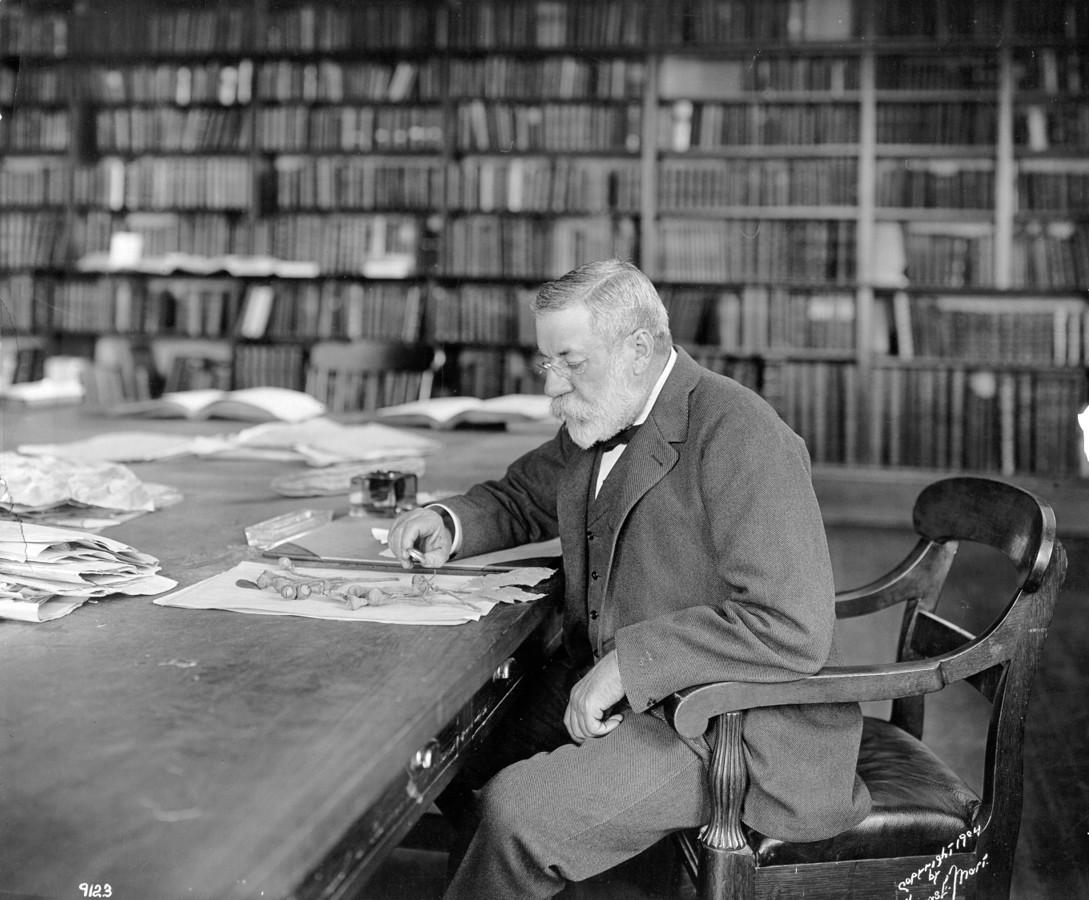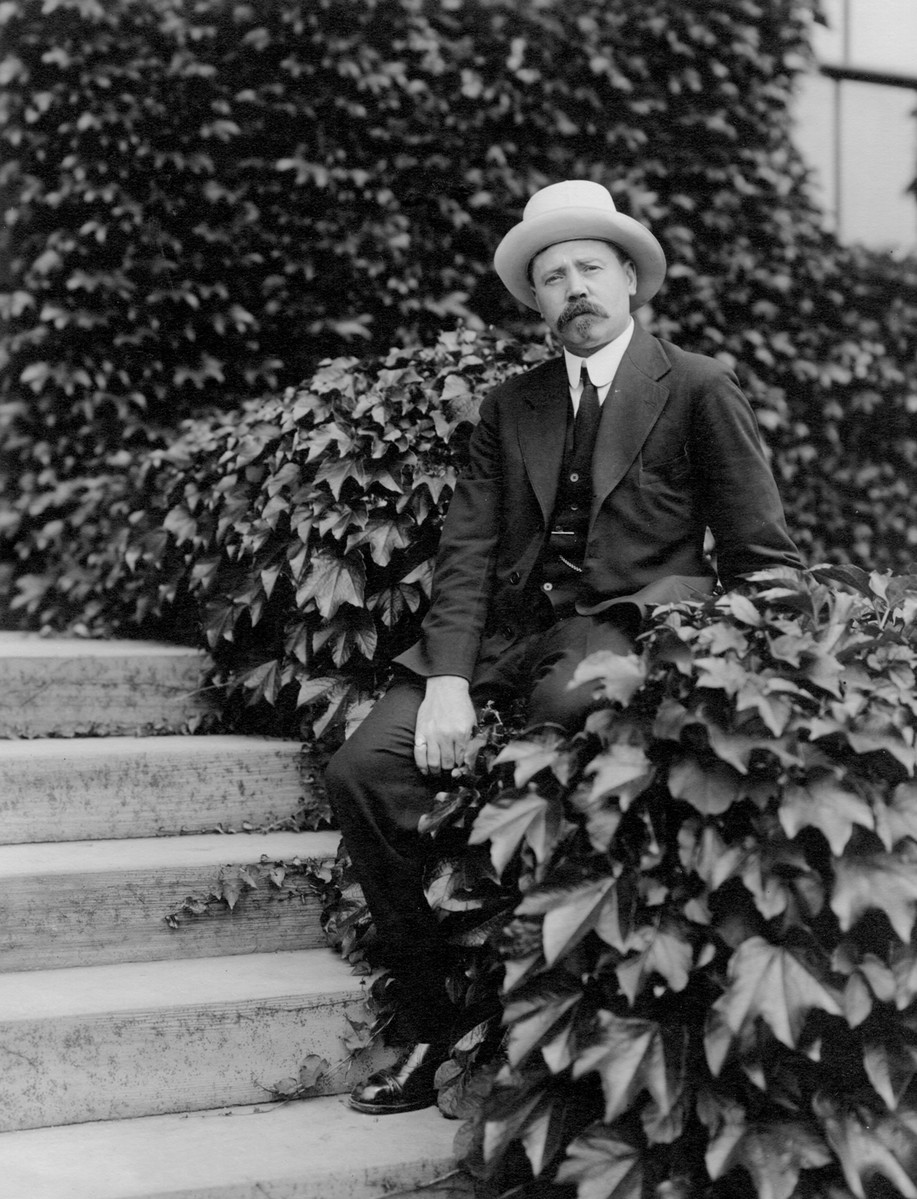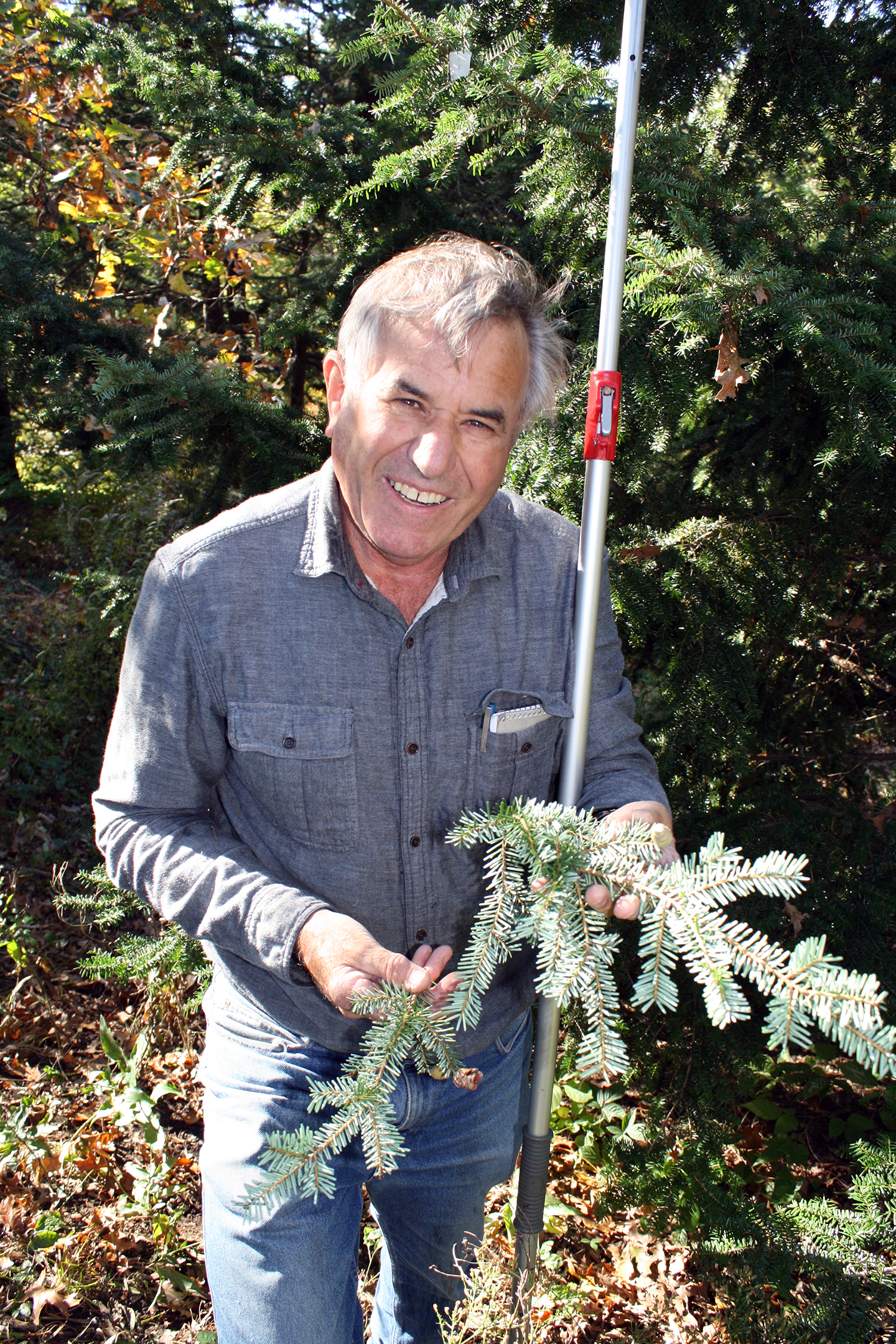Plant collecting has played a role at the Arboretum from its inception. The thousands of plants that grow in our landscape come from around the world. But who are the explorers who went out and brought the plants back? Four notable Arboretum plant collectors are profiled below.

Charles Sprague Sargent
Born in Boston, Charles Sprague Sargent (1841–1927) was a graduate of Harvard College class of 1862 and a Civil War veteran. Although the botanical sciences were not part of his formal education, he toured the gardens of Europe following his military service and then returned to manage his family’s estate, Holm Lea, in Brookline.
In 1873, Sargent received the appointment that would become his life’s work, the directorship of the yet unformed Arnold Arboretum. He soon hired Frederick Law Olmsted to help design the landscape. Sargent brokered a deal in 1882 between Harvard University and the City of Boston that gave the land of the Arboretum to the City in exchange for a 1,000-year lease agreement (renewable) with Harvard. The landscape and collections took shape and by the early 1890s a “worn out farm” was transformed into the nation’s first public arboretum.
In 1892, Sargent traveled to Japan and experienced firsthand the rich botanical diversity of Asia. He soon brought the Arboretum into a new era by hiring Ernest Henry Wilson to collect plants in western China. Wilson’s travels to China—and later to Japan, Korea, and Formosa (Taiwan)—brought many new species to the Arboretum, as did later expeditions by William Purdom, Frank Meyer, Joseph Rock, and others.
For more than fifty years, Sargent held the reins of the organization and guided the institution into the modern age. He published the fourteen-volume Silva of North America, corresponded extensively, and built a renowned botanical library and herbarium in Jamaica Plain. He served the Arboretum until his death in 1927 at age eighty-six.

Ernest Henry Wilson
Ernest Henry Wilson (1876-1930) was born in England. As a youth, he apprenticed at a nursery, and in 1892 became a gardener at the Birmingham Botanical Gardens. He joined the staff the Royal Botanical Garden at Kew in 1897.
Eager to obtain unique plants from Asia, the Veitch Nursery engaged Wilson to collect in China. Wilson made his first trip between 1899 and 1902 to search for the dove tree (Davidia involcrata), and he returned for a second Veitch expedition from 1903 to 1905. These successful expeditions prompted Charles Sargent to hire Wilson for three years to explore Hubei and Sichuan Provinces for the Arnold Arboretum beginning in 1907. Sargent sent Wilson to China again in 1910 to collect cones and conifer seeds. In September of that year, while traveling in west Sichuan, he was badly injured in a landslide that curtailed the expedition.
In 1914, Wilson explored Japan, focusing his attention on Japanese cherries (Prunus). Starting in 1917, he undertook a systematic exploration of Korea, Japan, and Taiwan, returning to Boston in 1919 with seeds, living plants, herbarium specimens, and seven hundred photographs. His last expedition, a tour of the gardens of the world, took place from 1920 to 1922. Wilson was a popular lecturer on the topics of his travels and horticulture. After Sargent’s death in 1927, he became keeper of the Arnold Arboretum, serving until his untimely death in an automobile accident in 1930.

Peter Del Tredici
Peter Del Tredici was born in California in 1945. He received his BA in zoology from University of California, Berkeley, in 1968; his MA in biology from University of Oregon, Eugene, in 1969; and his PhD in biology from Boston University in 1991. Del Tredici began at the Arboretum as assistant plant propagator in 1979, a post which included oversight and care for the bonsai collection. He served as editor of Arnoldia from 1989 to 1992, and as director of living collections from 1992 to 2004. During this time, Del Tredici also served as a lecturer in horticulture, botany, and landscape courses at the Arboretum and as the coordinator of the Summer Intern Program. He has taught as a senior lecturer in the Department of Landscape Architecture at the Harvard University Graduate School of Design. He retired from the Arboretum in 2014. He is currently a visiting lecturer in the Department of Urban Studies and Planning at MIT, teaching applied ecology and planning.
Del Tredici’s research interests are wide ranging and involve the interaction between woody plants and their environment. He focused on a number of plant genera during his career at the Arboretum, most notably Ginkgo, Tsuga, Sequoia, Magnolia, and Stewartia. In his work, he attempts to integrate the botany and ecology of a given species with the horticultural issues surrounding its propagation and cultivation. Over the past decade, his research has expanded to the subject of urban vegetation, which resulted in the publication of Wild Urban Plants of the Northeast: A Field Guide (Cornell University Press, 2010).

Michael S. Dosmann
In 2017, after serving as curator of the living collections at the Arboretum for a decade, Michael S. Dosmann was named keeper of the living collections, a rare and (nearly) singular honor bestowed by the institution. The first “keeper” was pioneering explorer Ernest Henry Wilson—Dosmann assumes the title as the Arboretum reinvigorates both Wilson’s legacy and its historical leadership in global plant exploration.
Recognized as a leading authority on collections management of botanical collections and a tireless advocate for public gardens, Dosmann has championed vastly improved systems and protocols for mapping, documenting, and inventorying Arboretum plants, influencing standards at botanical institutions nationwide. Since 2015 and in collaboration with Professor William (Ned) Friedman, the eighth director of the Arnold Arboretum, Dosmann has led the Arboretum’s ten-year initiative to accelerate efforts to explore, inventory, and collect vanishing biodiversity worldwide—the Campaign for the Living Collections—mounting and participating in multiple collecting expeditions in Asia and North America.
Dosmann received his BS in public horticulture from Purdue University (1996), and his MS (1998) and PhD (2006) in horticulture from Iowa State University and Cornell University, respectively. He is the author of more than sixty published articles, including twenty in Arnoldia, the journal of the Arnold Arboretum. He currently serves on the Board of Directors of the American Public Gardens Association, is an elected member of the Horticultural Club of Boston, and in 2014 provided on-air commentary for the three-part documentary Chinese Wilson produced by Central China Television.
